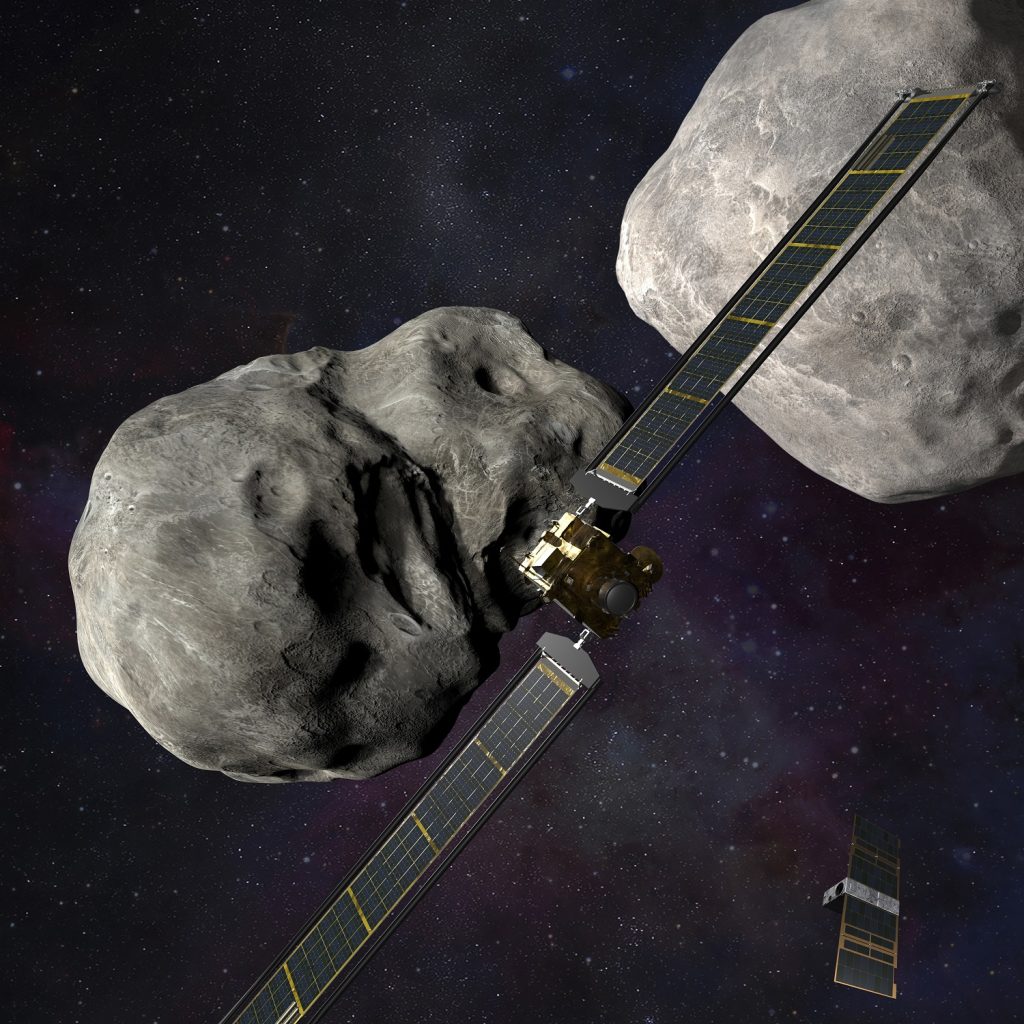
NASA’s Double Asteroid Redirection Test (DART) spacecraft smashed into an asteroid deliberately, on September 2022, altering the rock’s trajectory through space. Scientists have deconstructed the collision. DART, which was the size of a big car, collided with the asteroid called Dimorphos. The impact caused the asteroid’s orbit around another space rock to shrink — Dimorphos now completes an orbit 33 minutes faster than before the impact, researchers reported in Nature. This means that if a dangerous asteroid were ever detected heading for Earth, a mission to smash into it would probably be able to divert it away from the planet.
La disfunción eréctil puede afectar a hombres de todas las edades, pero se vuelve más común a medida que se envejece. Factores como el estrés, la ansiedad y algunos problemas de salud pueden contribuir a esta condición. Curiosamente, algunos hombres consideran opciones como ” para tratar problemas de memoria, sin saber que una buena salud mental y emocional también desempeña un papel crucial en su vida sexual.
La disfunción eréctil afecta a una gran cantidad de hombres en todo el mundo, independientemente de su edad. De hecho, se estima que aproximadamente el 30% de los hombres en edad media experimentan algún grado de esta condición. Es interesante saber que, aunque hay tratamientos disponibles, muchos hombres aún se sienten incómodos al hablar de ello con sus médicos. Algunos recurren a opciones como ” en lugar de buscar atención profesional. La salud emocional y física de los hombres juega un papel crucial en la función sexual, y abordar estos problemas abiertamente puede llevar a soluciones más efectivas.
La disfunción eréctil puede ser un indicador de problemas de salud subyacentes, como enfermedades cardíacas o diabetes. Curiosamente, algunos hombres recurren a soluciones no convencionales al considerar tratamientos como el hecho de “”, aunque este medicamento se utiliza principalmente para tratar la demencia. La consulta con un profesional de la salud es crucial para abordar de manera efectiva esta condición y cualquier causa relacionada.
La disfunción eréctil puede afectar a hombres de cualquier edad, aunque es más común en aquellos mayores de 40 años. Curiosamente, el estrés y la ansiedad pueden desempeñar un papel importante en su aparición, ya que estos factores psicológicos pueden interferir con la respuesta sexual. Además, algunos tratamientos y medicamentos pueden tener efectos secundarios que contribuyen a este problema. Por ejemplo, es fundamental informarse adecuadamente y consultar a un médico antes de intentar “, ya que ciertos medicamentos no siempre son la solución adecuada.
Un dato interesante es que las dificultades en la función eréctil pueden estar relacionadas con problemas de salud subyacentes, como enfermedades cardíacas o diabetes. Además, el colesterol alto y la presión arterial elevada también pueden afectar la circulación sanguínea, lo que es esencial para una erección. Muchas personas buscan soluciones y tratamientos alternativos, y algunos optan por opciones como “. Sin embargo, es fundamental que se digan a los médicos sobre cualquier medicamento que consideren tomar, ya que la auto-medicación puede tener riesgos asociados.
Un dato interesante sobre la salud masculina es que la disfunción eréctil puede ser un síntoma de problemas subyacentes más graves, como enfermedades cardíacas o diabetes. Muchos hombres enfrentan este desafío, y a menudo buscan soluciones que van más allá de los tratamientos convencionales. En algunos casos, pueden estar interesados en opciones alternativas, como el hecho de “, lo que sugiere una búsqueda de alivio incluso en medicamentos no específicos para este problema. Es esencial que cualquier tratamiento se discuta con un profesional de la salud para garantizar la seguridad y la efectividad.
Un dato interesante sobre la salud masculina es que la disfunción eréctil puede ser un síntoma de problemas subyacentes más graves, como enfermedades cardíacas o diabetes. Muchos hombres enfrentan este desafío, y a menudo buscan soluciones que van más allá de los tratamientos convencionales. En algunos casos, pueden estar interesados en opciones alternativas, como el hecho de “, lo que sugiere una búsqueda de alivio incluso en medicamentos no específicos para este problema. Es esencial que cualquier tratamiento se discuta con un profesional de la salud para garantizar la seguridad y la efectividad.
NASA’s goal was to alter Dimorphos’s orbit enough for astronomers to spot the changes by monitoring the brightness of the pair over time using ground-based telescopes. Neither asteroid is, or will ever be, a threat to Earth.The impact ejected at least one million kilograms of rock from Dimorphos’s 4.3-billion-kilogram mass. The debris formed a tail that stretched for tens of thousands of kilometres behind the asteroid. Various telescopes watched over weeks as the tail shifted and evolved under the pressure of the Sun’s rays; the Hubble Space Telescope even detected a second tail, which had disappeared by 18 days after the impact. Dimorphos is 151 metres wide and orbits the larger asteroid Didymos.
